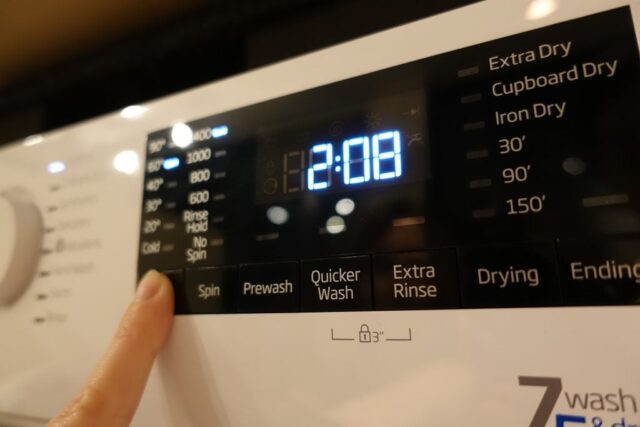Whether you’ve got the cheapest or the most expensive washing machine, they all need some care and attention to keep them in tip-top condition. With just a little bit of effort, your washing machine will keep going for years, and will keep your clothes in their best condition, too.
To keep your washing machine working properly, here’s what you need to do, both with every wash and for regular maintenance. For a deeper clean, check out our guide on how to clean a washing machine.
What you need
- Screwdriver
- Towel or microfibre cloth
- Washing machine cleaner
The short version
- Use the correct amount of detergent and fabric softener
- Wipe down the door and leave it open after every wash
- Wash the detergent drawer
- Wash your washing machine
- Empty and clean the washing machine’s filter
-
Step
1Use the correct amount of detergent and fabric softener
While you might think that adding more detergent or fabric softener will make your clothes cleaner, using too much of either can cause build-up that can clog the inside of your machine.
It’s essential to use the right dosage based on how hard your water is (a test strip or your water company can tell you this) and the amount of washing in your machine. Check the back of your laundry detergent and fabric softener for the correct guide. It can be helpful to weigh out the first amount so that you get an idea of how much is really required.

-
Step
2Wipe down the door and leave it open after every wash

Mould can build up around the rubber seal, particularly if this is not allowed to dry after each wash. When finishing a wash load, leave the door open so that the water can evaporate. It’s not a bad idea to keep a spare microfibre cloth or towel around so that you can give the inside of the door and seal a quick wipe down after unloading washing. Doing this quick job will mean that you don’t have to go too heavy with mould remover in the future.
It’s also worth leaving the detergent drawer open for the same reason, allowing it to dry out.

-
Step
3Wash the detergent drawer

At least once a month, it’s worth removing the detergent drawer. The process is slightly different for each washing machine, but all will have a small clip that you press to release the drawer, allowing you to remove it completely.
Wash the drawer in the sink with some washing-up liquid, and then allow it to fully dry before reinserting it.
While the drawer is removed, wash the cavity it slides into, removing any trace of detergent or fabric softener buildup.

-
Step
4Wash your washing machine

Limescale and grime build-up can reduce a washing machine’s efficiency and ability to clean, so it’s important to clean the washing machine every month to six weeks.
You can use a cup (250ml) of white wine vinegar, added to the drum, for regular cleaning. However, for a deep cleaning or for ease, you can use a properly formulated washing machine formula, following the instructions on the back for where to put the fluid.
With vinegar or washing machine cleaner any high-temperature wash cycle (60°C plus) should be used to perform the clean, but check if your machine has a special drum clean cycle, which will have the correct temperature and wash settings pre-programmed in.

-
Step
5Empty and clean the washing machine’s filter

At the bottom of your washing machine is a filter designed to hold lint and larger items, preventing them from going down the hose and causing a blockage. If this filter is not cleaned, it can block the machine’s pump, preventing emptying.
Once a month, you should clean this filter, which is usually found behind the plinth or a small door. You’ll see a small cap that must be turned and removed. These caps are often stiff, and some require a screwdriver to remove a screw first.
Put a shallow tray underneath the cap before unscrewing to catch any water that comes out, and have a spare towel ready to mop up any spill. Remove the filter, clean it under a hot tap, and reassemble.












